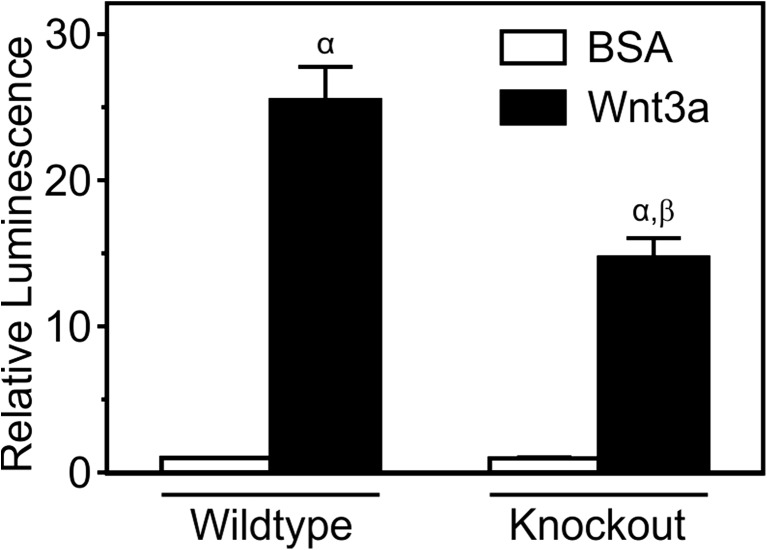Fig. 5.
Osteoblasts from P2rx7 knockout mice exhibit smaller response to Wnt3a. Calvarial osteoblasts from wild-type and P2rx7 knockout mice were transfected in suspension with a β-catenin luciferase reporter plasmid, seeded at a density of 3.0 × 104 cells/cm2 in a 48-well plate, and cultured for 1 day. Cells were then placed in serum-free media and incubated overnight. The next day, cells were treated under serum-free conditions with recombinant mouse Wnt3a (20 ng/ml) or its vehicle (0.2 % BSA; BSA). After 24 h, cell lysates were collected and luminescence was assessed as a measure of β-catenin transcriptional activity. The luminescence for each treatment was expressed relative to BSA treatment in wild-type cells. α indicates a significant effect of Wnt3a on β-catenin transcriptional activity compared to BSA treatment (p < 0.05). β indicates significant effect of genotype (p < 0.05). Data are means ± SEM (n = 18-21 samples from seven independent experiments)

